-
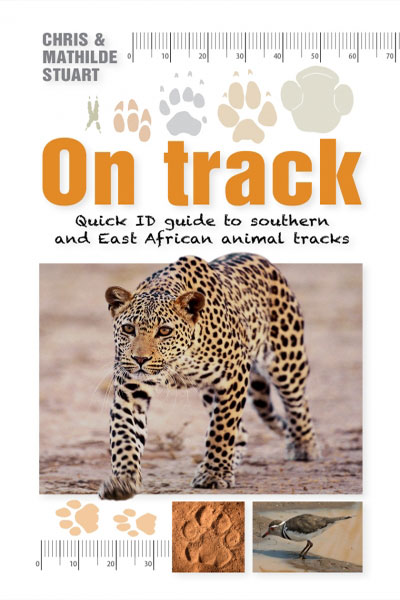 Following the success of the earlier Scatalog – Quick ID guide to southern African animal droppings, here’s another quick and quirky identification guide, this time to tracks of the region’s most commonly found mammals, but also includes tracks of reptiles, rodents, birds and insects. A simple key on the inside front cover directs users to any of 11 categories, such as ‘cloven hooves’, ‘paws’ or 'tramline-like trails. Nearly 100 animals or closely related groups of animals are depicted: for each, there’s a silhouette of front and back feet and a colour photograph of the track the average measurements for each track a short description of the track information about the circumstances and likely habitat Concise and to-the-point, this pocket-sized reference
Following the success of the earlier Scatalog – Quick ID guide to southern African animal droppings, here’s another quick and quirky identification guide, this time to tracks of the region’s most commonly found mammals, but also includes tracks of reptiles, rodents, birds and insects. A simple key on the inside front cover directs users to any of 11 categories, such as ‘cloven hooves’, ‘paws’ or 'tramline-like trails. Nearly 100 animals or closely related groups of animals are depicted: for each, there’s a silhouette of front and back feet and a colour photograph of the track the average measurements for each track a short description of the track information about the circumstances and likely habitat Concise and to-the-point, this pocket-sized reference -
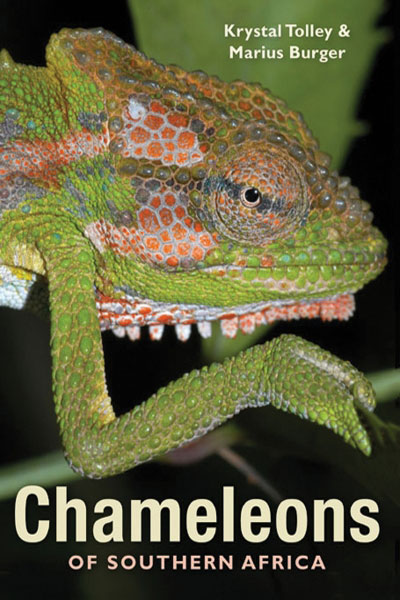 Chameleons are fascinating creatures: they almost always evoke in people a strong response, be it delight, wonder, or fear. Chameleons of Southern Africa explores this interesting group of lizards and discusses their strange and unusual, sometimes unnerving, characteristics. It presents an overview of all types of chameleons (of which there are up to 160 species in total, worldwide), their history, geographic distribution (restricted mainly to Madagascar and Africa), reproduction, behaviour and their relationships to each other.
Chameleons are fascinating creatures: they almost always evoke in people a strong response, be it delight, wonder, or fear. Chameleons of Southern Africa explores this interesting group of lizards and discusses their strange and unusual, sometimes unnerving, characteristics. It presents an overview of all types of chameleons (of which there are up to 160 species in total, worldwide), their history, geographic distribution (restricted mainly to Madagascar and Africa), reproduction, behaviour and their relationships to each other. -
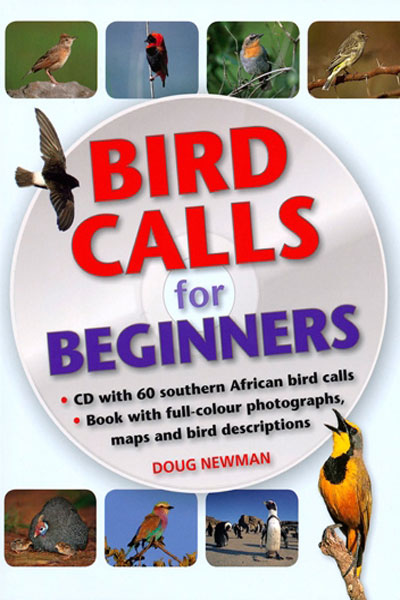 Bird Calls for Beginners, by Doug Newman features 60 common southern African bird calls; the book shows colour photographs of these birds, distribution maps and interesting text about their habits, feeding and nesting routines, and describes their calls.
Bird Calls for Beginners, by Doug Newman features 60 common southern African bird calls; the book shows colour photographs of these birds, distribution maps and interesting text about their habits, feeding and nesting routines, and describes their calls. -
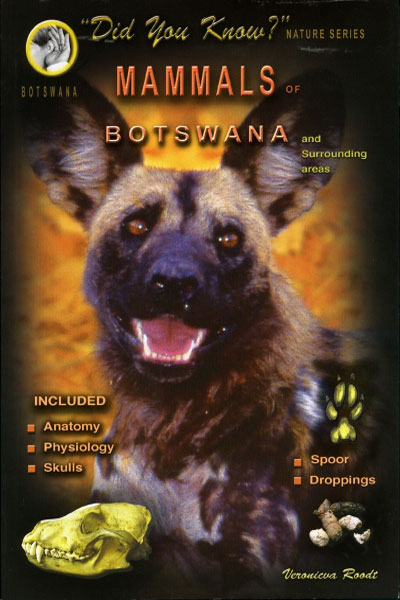 This guide to the mammals of Botswana offers a detailed roundup of more than 80 animals – with maps, travel information and a photographic field guide in a single, handy volume. It covers the six major mammal groups: non-ruminants, ruminants, carnivores, non-carnivorous small mammals, rodents and shrews, and bats – in colour-coded sections for quick reference, and with animal names in seven languages.
This guide to the mammals of Botswana offers a detailed roundup of more than 80 animals – with maps, travel information and a photographic field guide in a single, handy volume. It covers the six major mammal groups: non-ruminants, ruminants, carnivores, non-carnivorous small mammals, rodents and shrews, and bats – in colour-coded sections for quick reference, and with animal names in seven languages. -
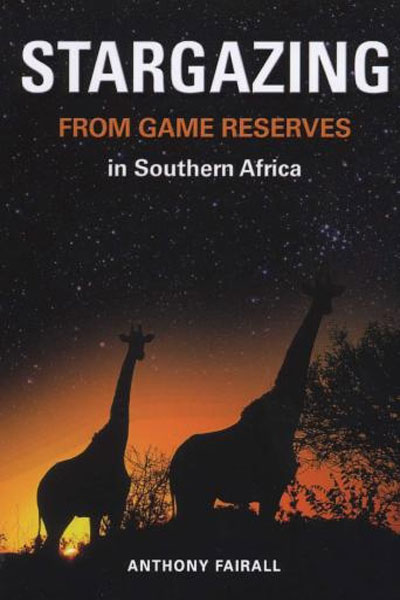 Stargazing from game reserves in Southern Africa offers visitors to game and nature parks an exciting night-time activity in the bush, giving them an opportunity to turn their binoculars skyward after dark.
Stargazing from game reserves in Southern Africa offers visitors to game and nature parks an exciting night-time activity in the bush, giving them an opportunity to turn their binoculars skyward after dark. -
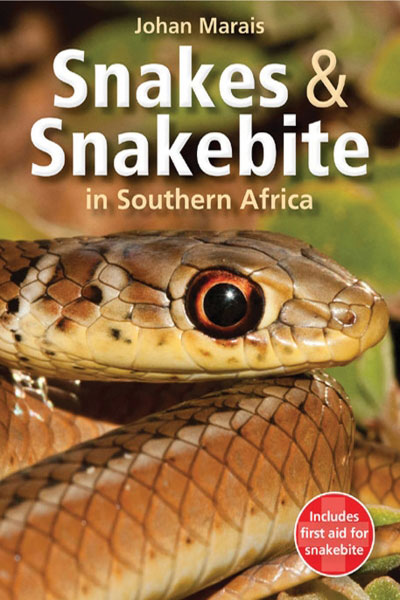 An essential guide to identifying all dangerous snakes and common harmless snakes in southern Africa, as well as quick and important practical advice on first aid measures in the case of snakebite. Simple icons, distribution maps, succinct text and numerous full-colour photographs assist with easy identification of snakes commonly encountered in the region. Symptoms and treatment of snakebites are described, providing the reader with vital first-aid information.
An essential guide to identifying all dangerous snakes and common harmless snakes in southern Africa, as well as quick and important practical advice on first aid measures in the case of snakebite. Simple icons, distribution maps, succinct text and numerous full-colour photographs assist with easy identification of snakes commonly encountered in the region. Symptoms and treatment of snakebites are described, providing the reader with vital first-aid information. -
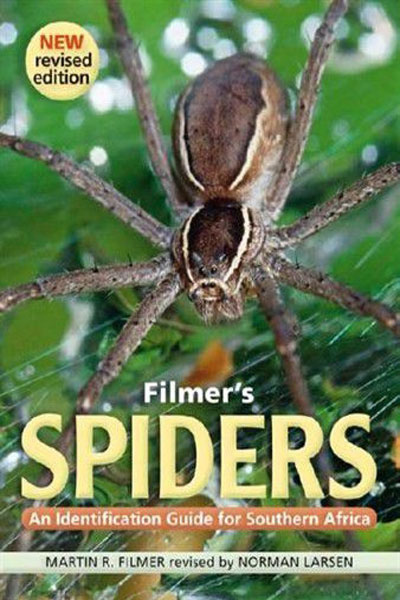 Fully revised and updated, Filmer’s spiders: an identification guide to Southern Africa features all 63 families of spider that occur in this region. A fresh layout, full-colour photographs throughout – many of them new – and diagrams of diagnostic features make this a quick and easy guide for use in the field. The spiders are grouped into web-living, ground-living, and plant-living species to aid identification.
Fully revised and updated, Filmer’s spiders: an identification guide to Southern Africa features all 63 families of spider that occur in this region. A fresh layout, full-colour photographs throughout – many of them new – and diagrams of diagnostic features make this a quick and easy guide for use in the field. The spiders are grouped into web-living, ground-living, and plant-living species to aid identification. -

-
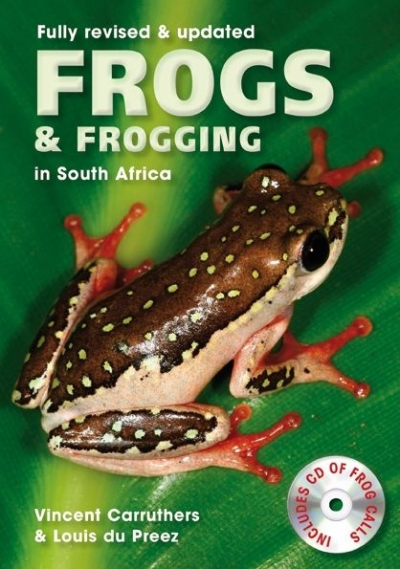 Frogs & Frogging in South Africa offers amateur froggers an accessible and practical introduction to frog identification. This edition of the highly popular guide has been expertly revised and fully updated to reflect the latest advances in taxonomy and nomenclature.
Frogs & Frogging in South Africa offers amateur froggers an accessible and practical introduction to frog identification. This edition of the highly popular guide has been expertly revised and fully updated to reflect the latest advances in taxonomy and nomenclature. -
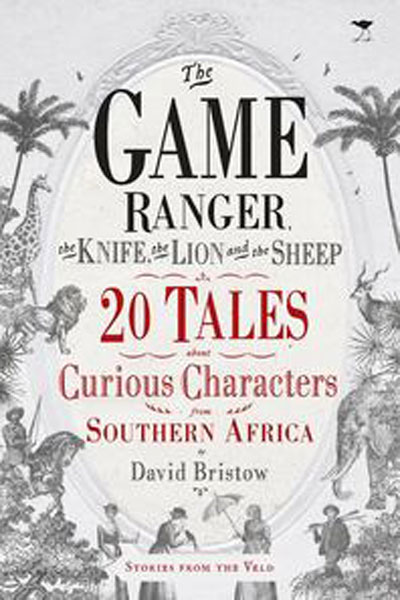 The Game Ranger, the Knife, the Lion, and the Sheep offers spell-binding stories of some amazing, little known characters from South Africa, past and very past. Let us introduce you to some of the characters you will meet inside. Starting with Krotoa, the Khoi maiden who is found working in the Van Riebeeck household as both servant and interpreter.
The Game Ranger, the Knife, the Lion, and the Sheep offers spell-binding stories of some amazing, little known characters from South Africa, past and very past. Let us introduce you to some of the characters you will meet inside. Starting with Krotoa, the Khoi maiden who is found working in the Van Riebeeck household as both servant and interpreter. -
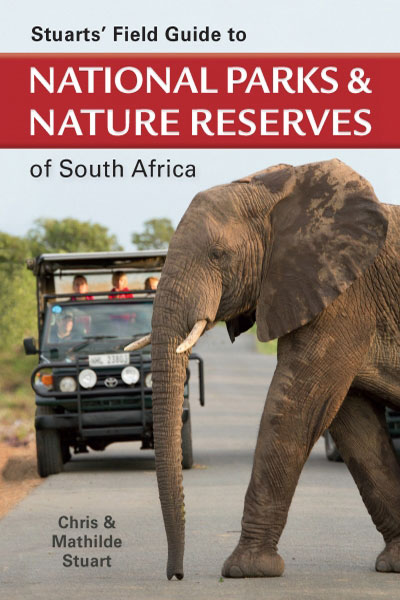 This book is a unique and indispensable guide to the hidden treasures of 43 of South Africa's best and most accessible national parks, nature reserves and wilderness areas. Included are more than 900 photographs, 140 detailed park, locator, provincial and vegetation maps, and a 31-page photographic guide that aids identification of wildlife and vegetation. Organised by province, the conservation areas are comprehensively described, covering history, location, landscape, geology, vegetation, and wildlife.
This book is a unique and indispensable guide to the hidden treasures of 43 of South Africa's best and most accessible national parks, nature reserves and wilderness areas. Included are more than 900 photographs, 140 detailed park, locator, provincial and vegetation maps, and a 31-page photographic guide that aids identification of wildlife and vegetation. Organised by province, the conservation areas are comprehensively described, covering history, location, landscape, geology, vegetation, and wildlife. -
 World-renowned wildlife trackers Alex van den Heever and Renias Mhlongo have spent more than two decades working together, tracking leopards and lions at Londolozi, jaguars in South America and grizzly bears in the United States. In Changing a Leopard's Spots, Alex shares stories from his life with Renias, including the successes, failures, dramas, laughter, disappointments, and highlights.
World-renowned wildlife trackers Alex van den Heever and Renias Mhlongo have spent more than two decades working together, tracking leopards and lions at Londolozi, jaguars in South America and grizzly bears in the United States. In Changing a Leopard's Spots, Alex shares stories from his life with Renias, including the successes, failures, dramas, laughter, disappointments, and highlights. -
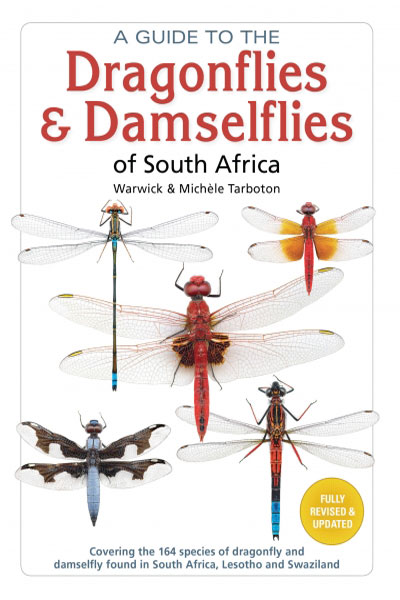 In this fully revised edition of A Guide to the Dragonflies & Damselflies of South Africa, all 164 species known to occur in South Africa, Lesotho and Swaziland are described and illustrated, grouped according to family (six dragonfly and six damselfly families). The species entries feature scans of live insects (close-up and side-view images) and photographs of specimens in their natural environment and showing key behaviours.
In this fully revised edition of A Guide to the Dragonflies & Damselflies of South Africa, all 164 species known to occur in South Africa, Lesotho and Swaziland are described and illustrated, grouped according to family (six dragonfly and six damselfly families). The species entries feature scans of live insects (close-up and side-view images) and photographs of specimens in their natural environment and showing key behaviours. -
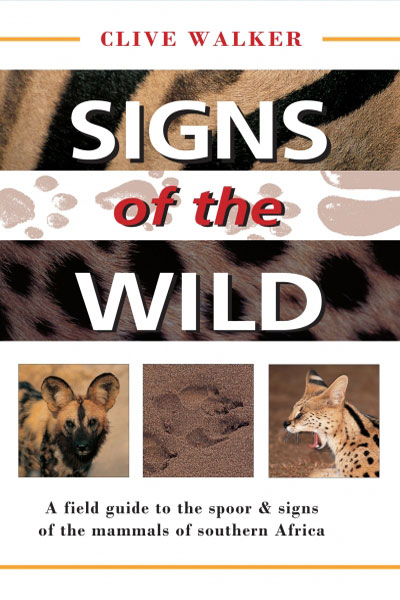 This compact field guide to the identification of Southern African mammals based on their spoor, droppings and skulls has been accepted as the standard work on the subject. This edition offers up-to-date information on identification through signs. This edition provides new illustrations for several species. It also features illustrations of skulls for all the carnivores.
This compact field guide to the identification of Southern African mammals based on their spoor, droppings and skulls has been accepted as the standard work on the subject. This edition offers up-to-date information on identification through signs. This edition provides new illustrations for several species. It also features illustrations of skulls for all the carnivores. -
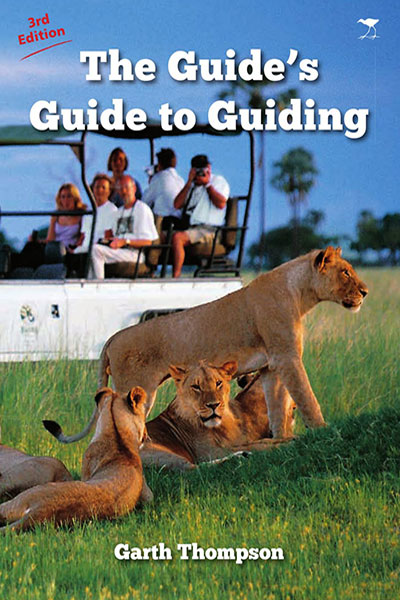 Guides Guide to Guiding Kindle Edition. The Guide's Guide to Guiding is written by veteran wildlife safari guide Garth Thompson and is aimed at informing and educating those that have a love and appreciation for the great outdoors – and a desire to share this passion with others.
Guides Guide to Guiding Kindle Edition. The Guide's Guide to Guiding is written by veteran wildlife safari guide Garth Thompson and is aimed at informing and educating those that have a love and appreciation for the great outdoors – and a desire to share this passion with others. -
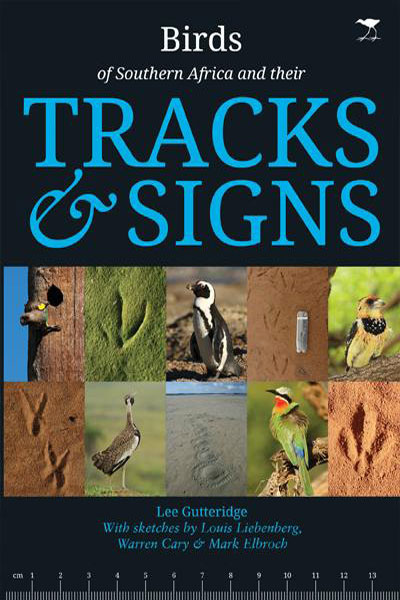 This book is a totally fresh approach to observing birds in Southern Africa. It affords you the opportunity to gather previously inaccessible and indecipherable information in the form of tracks and signs left behind by our avifauna. The book explores the unique details of the spoor, or tracks, of many species of birds. This is done in multiple ways including by observing their droppings, examining their feeding behaviour as well as their general nesting structures. It is remarkable how tracks and signs in nature help you to enrich your knowledge of bird species.
This book is a totally fresh approach to observing birds in Southern Africa. It affords you the opportunity to gather previously inaccessible and indecipherable information in the form of tracks and signs left behind by our avifauna. The book explores the unique details of the spoor, or tracks, of many species of birds. This is done in multiple ways including by observing their droppings, examining their feeding behaviour as well as their general nesting structures. It is remarkable how tracks and signs in nature help you to enrich your knowledge of bird species. -
 Professor Terence McCarthy with 'How on Earth? opens the door to normally unimaginable processes, changes and incidences of Earth history. Perhaps the most important attributes that set humans apart from other animals are our ability to reason, to articulate our thoughts and to convey them to others.
Professor Terence McCarthy with 'How on Earth? opens the door to normally unimaginable processes, changes and incidences of Earth history. Perhaps the most important attributes that set humans apart from other animals are our ability to reason, to articulate our thoughts and to convey them to others. -
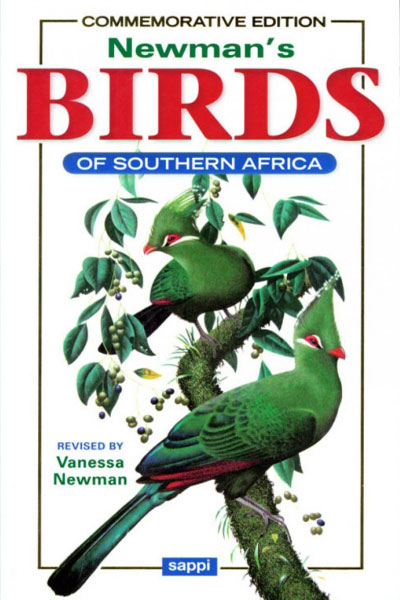 This commemorative tenth edition celebrates the contribution of the late author, Kenneth Newman, fully revised and updated by his daughter, Vanessa Newman, to reflect the latest research, taxonomy, and common names. Newman's Birds of Southern Africa, a leading field guide in the region, illustrates and fully describes all the birds recorded from the Antarctic to the Zambezi River.
This commemorative tenth edition celebrates the contribution of the late author, Kenneth Newman, fully revised and updated by his daughter, Vanessa Newman, to reflect the latest research, taxonomy, and common names. Newman's Birds of Southern Africa, a leading field guide in the region, illustrates and fully describes all the birds recorded from the Antarctic to the Zambezi River. -
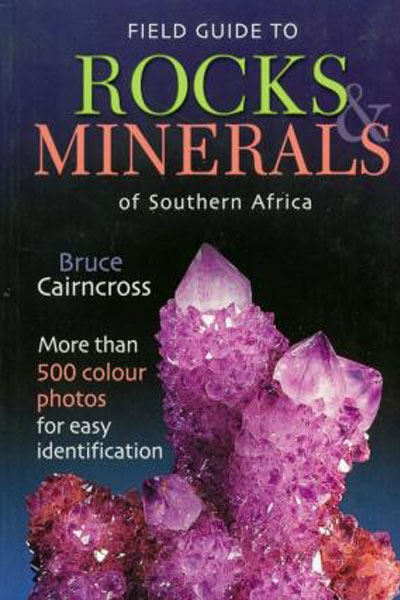 Southern Africa boasts many spectacular examples of rocks and minerals; volcanic lava make up the dramatic Drakensberg mountain range, granite mountains form stunning scenery in Namibia and Zimbabwe, and some of the most ancient rocks on Earth - over 3000 million years old - are to be found on the subcontinent. The region is home to many important and interesting minerals, as well as a wide array of beautiful gemstones - diamonds from South Africa.
Southern Africa boasts many spectacular examples of rocks and minerals; volcanic lava make up the dramatic Drakensberg mountain range, granite mountains form stunning scenery in Namibia and Zimbabwe, and some of the most ancient rocks on Earth - over 3000 million years old - are to be found on the subcontinent. The region is home to many important and interesting minerals, as well as a wide array of beautiful gemstones - diamonds from South Africa. -
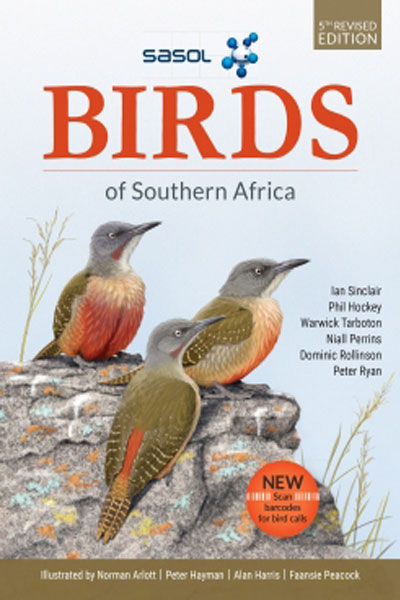 Sasol birds of Southern Africa remains the region's most comprehensively illustrated and trusted field guide. This fourth edition has been greatly improved by the addition of group introductions, calendar bars showing species' occurrence and breeding periods, a section on 'how to use this book', as well as sonograms depicting the calls of tricky bird groups.
Sasol birds of Southern Africa remains the region's most comprehensively illustrated and trusted field guide. This fourth edition has been greatly improved by the addition of group introductions, calendar bars showing species' occurrence and breeding periods, a section on 'how to use this book', as well as sonograms depicting the calls of tricky bird groups. -
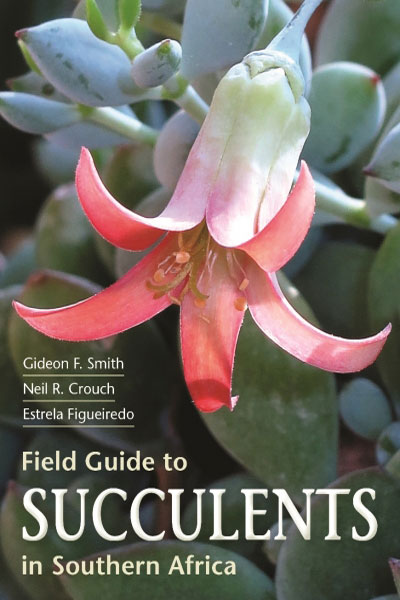 This user-friendly, richly illustrated field guide features more than 700 southern African succulents, focusing on the most interesting and commonly encountered species. An introduction to families and their key features will help readers identify the relevant plant group, while concise accounts describing the plants’ diagnostic features, along with distribution maps, will enable quick ID of species.
This user-friendly, richly illustrated field guide features more than 700 southern African succulents, focusing on the most interesting and commonly encountered species. An introduction to families and their key features will help readers identify the relevant plant group, while concise accounts describing the plants’ diagnostic features, along with distribution maps, will enable quick ID of species. -
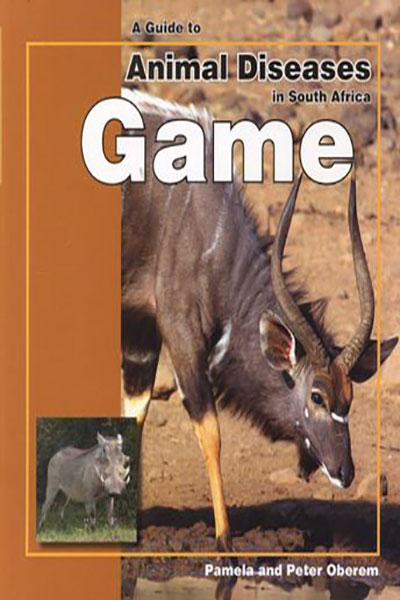 This is the first comprehensive guide to wildlife diseases to be published in South Africa specifically for game farm owners, game rangers and others involved in the management and handling of wildlife. It contains 190 photographs, illustrations, maps, and parasite life cycles.
This is the first comprehensive guide to wildlife diseases to be published in South Africa specifically for game farm owners, game rangers and others involved in the management and handling of wildlife. It contains 190 photographs, illustrations, maps, and parasite life cycles. -
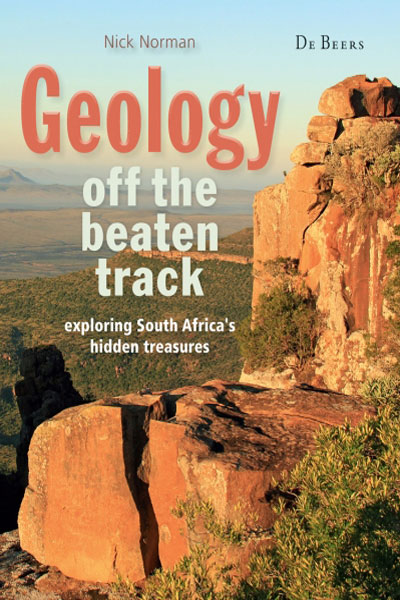 Geology off the beaten track follows on the success of author Nick Norman’s earlier Geological Journeys (co-authored with Gavin Whitfield), which has sold more than 20 000 copies in the last 6 years. This new book helps readers understand and interpret the geology along SA’s regional and other less-travelled roads. It features 13 detailed routes across the country, taking in geologically interesting areas such as the Richtersveld, Cape winelands and the Valley of Desolation near Graaff-Reinet. The text is richly illustrated with photos and explanatory diagrams, making it suitable for armchair travellers too. Maps for all the routes indicate key geosites, with GPS readings to pinpoint their location.
Geology off the beaten track follows on the success of author Nick Norman’s earlier Geological Journeys (co-authored with Gavin Whitfield), which has sold more than 20 000 copies in the last 6 years. This new book helps readers understand and interpret the geology along SA’s regional and other less-travelled roads. It features 13 detailed routes across the country, taking in geologically interesting areas such as the Richtersveld, Cape winelands and the Valley of Desolation near Graaff-Reinet. The text is richly illustrated with photos and explanatory diagrams, making it suitable for armchair travellers too. Maps for all the routes indicate key geosites, with GPS readings to pinpoint their location. -
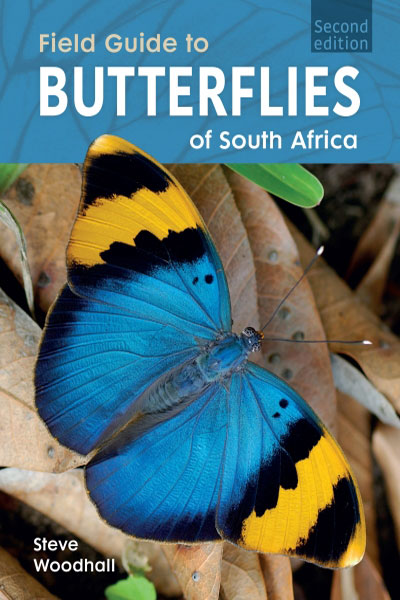 Field Guide to Butterflies of South Africa is designed for easy, rapid identification of all butterflies likely to be seen in South Africa. Following a worldwide trend to butterfly watching, readers are encouraged to observe behaviour rather than collect specimens. A detailed introductory section discusses butterfly biology, behaviour and anatomy, and butterfly families and subfamilies.
Field Guide to Butterflies of South Africa is designed for easy, rapid identification of all butterflies likely to be seen in South Africa. Following a worldwide trend to butterfly watching, readers are encouraged to observe behaviour rather than collect specimens. A detailed introductory section discusses butterfly biology, behaviour and anatomy, and butterfly families and subfamilies. -
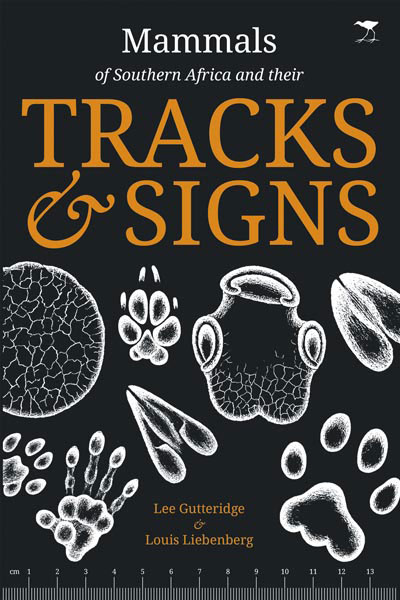 Tracking is a much-loved, yet difficult, subject that attracts at least some of the attention of almost every bush-goer who ventures into the wild places of southern Africa. The ability to accurately read difficult, partial, or little-seen signs left in the soil or sand is rare and largely the domain of professionals.
Tracking is a much-loved, yet difficult, subject that attracts at least some of the attention of almost every bush-goer who ventures into the wild places of southern Africa. The ability to accurately read difficult, partial, or little-seen signs left in the soil or sand is rare and largely the domain of professionals. -
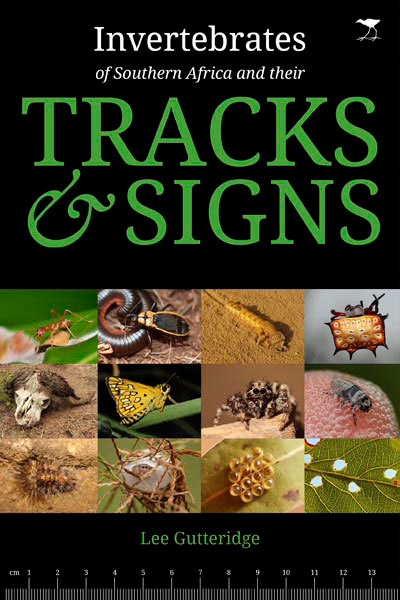 This book intensively covers a never-before-explored aspect of Southern African nature and is an essential new addition to the library of every nature lover. It was researched and written over the last four and a half years to open a door to a little-known micro-world that exists all around us. Invertebrates – which include commonly seen creatures such as butterflies, spiders, beetles, worms, and scorpions – are everywhere. The signs of their day-to-day activities are all around us if we know where to look. The life cycles and behaviours of many animals are discussed, with a special focus on interactions between mammals and invertebrates – a fascinating subject.
This book intensively covers a never-before-explored aspect of Southern African nature and is an essential new addition to the library of every nature lover. It was researched and written over the last four and a half years to open a door to a little-known micro-world that exists all around us. Invertebrates – which include commonly seen creatures such as butterflies, spiders, beetles, worms, and scorpions – are everywhere. The signs of their day-to-day activities are all around us if we know where to look. The life cycles and behaviours of many animals are discussed, with a special focus on interactions between mammals and invertebrates – a fascinating subject. -
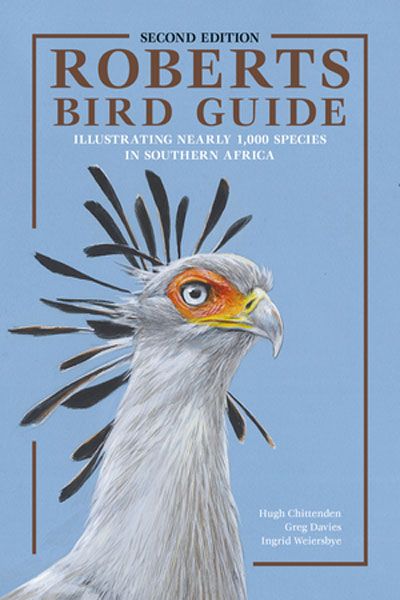 Covering nearly 1,000 species found in southern Africa (south of the Cunene and Zambezi rivers), this 570-page revised edition of Roberts Bird Guide features stunning new artwork detailing seasonal, age and sexual differences in approximately 240 annotated colour plates ...
Covering nearly 1,000 species found in southern Africa (south of the Cunene and Zambezi rivers), this 570-page revised edition of Roberts Bird Guide features stunning new artwork detailing seasonal, age and sexual differences in approximately 240 annotated colour plates ... -
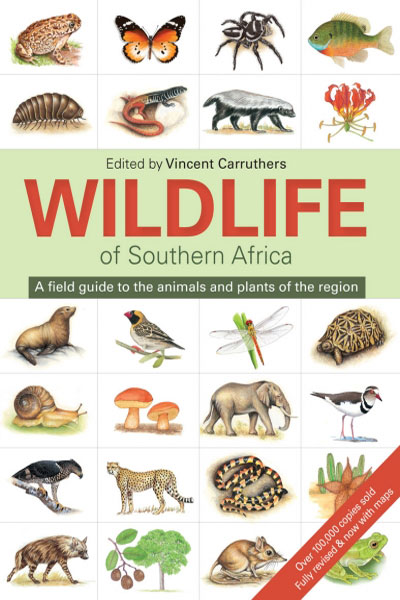 A field guide to the wildlife of southern Africa, describing over 2,000 plants and animals, with accurate illustrations in full colour. This book has been a trusted field companion for many years. Comprehensively updated, it now features range maps for most groups. The chapters are colour-coded for easy reference, and diagnostic features appear in bold type within the descriptions. Each chapter is written by a leading expert in the field. All the main plant and animal groups are covered: Lower invertebrates; Spiders and other arachnids; Insects; Freshwater fishes; Frogs; Reptiles; Birds; Mammals; Grasses, sedges, ferns, and fungi; Wildflowers; Trees.
A field guide to the wildlife of southern Africa, describing over 2,000 plants and animals, with accurate illustrations in full colour. This book has been a trusted field companion for many years. Comprehensively updated, it now features range maps for most groups. The chapters are colour-coded for easy reference, and diagnostic features appear in bold type within the descriptions. Each chapter is written by a leading expert in the field. All the main plant and animal groups are covered: Lower invertebrates; Spiders and other arachnids; Insects; Freshwater fishes; Frogs; Reptiles; Birds; Mammals; Grasses, sedges, ferns, and fungi; Wildflowers; Trees. -
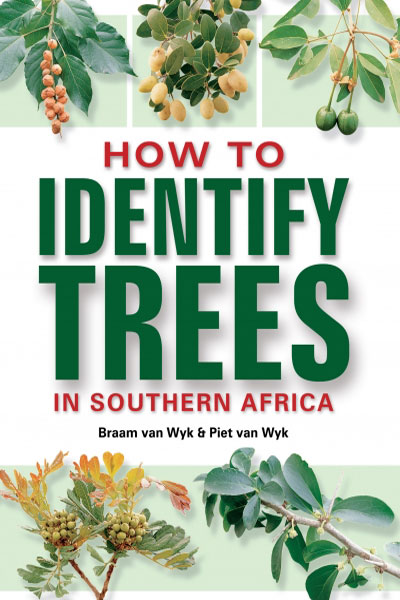 This book’s title says it all! Now in an updated second edition, it provides a clear understanding of how trees are constructed and what to look for when identifying a tree. The book is divided into two parts: • Part 1 describes and clearly illustrates the different parts of a tree and their role in tree identification. • Part 2 features a key to 43 tree groups, based on easy-to-observe stem and leaf features.
This book’s title says it all! Now in an updated second edition, it provides a clear understanding of how trees are constructed and what to look for when identifying a tree. The book is divided into two parts: • Part 1 describes and clearly illustrates the different parts of a tree and their role in tree identification. • Part 2 features a key to 43 tree groups, based on easy-to-observe stem and leaf features. -
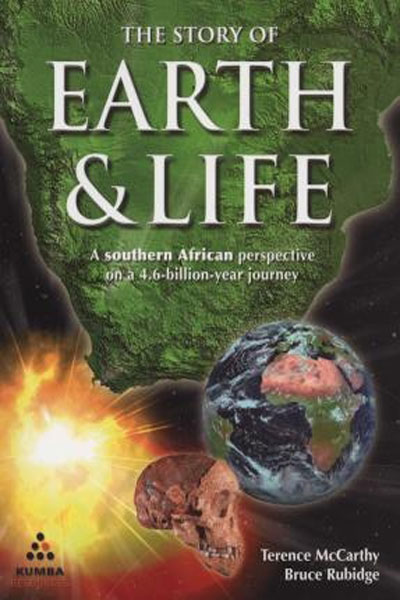 Southern Africa is without equal in terms of geology, a treasure trove of valuable minerals with a geological history dating back some 3 600 million years. In addition, the evolution of plants and animals, especially mammals and dinosaurs, is well preserved in the region, which also has among the best records of the origin of modern man.
Southern Africa is without equal in terms of geology, a treasure trove of valuable minerals with a geological history dating back some 3 600 million years. In addition, the evolution of plants and animals, especially mammals and dinosaurs, is well preserved in the region, which also has among the best records of the origin of modern man.

